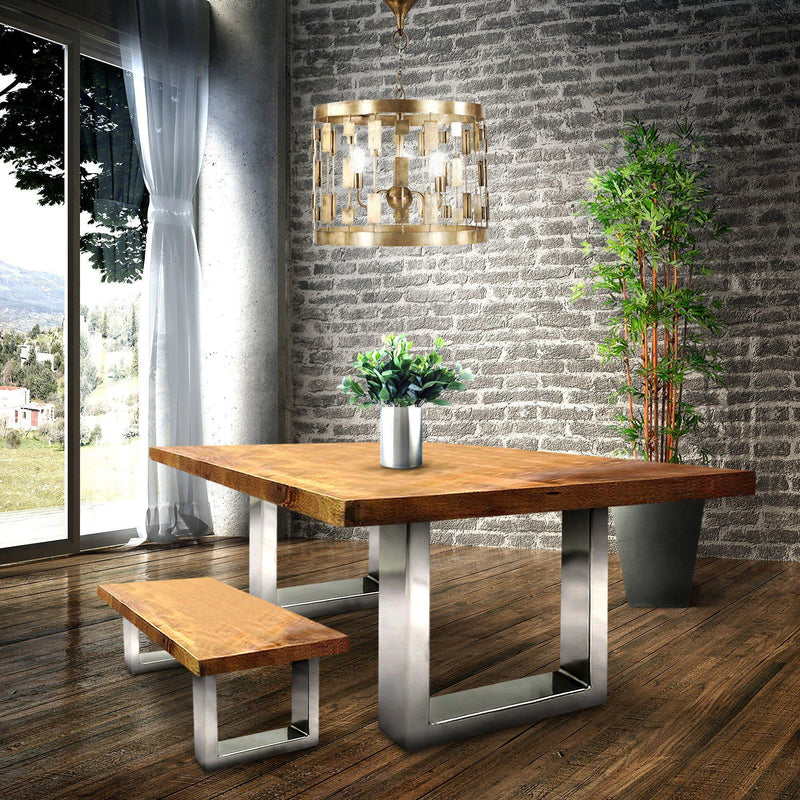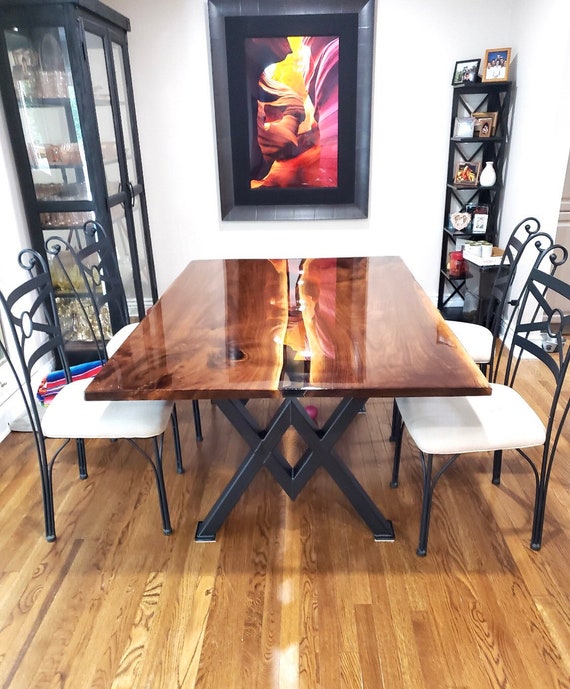Why Custom Dining Room Table Legs Are Worth the Investment
Just How to Select the Perfect Dining Area Table Legs for Your Home Decoration
Selecting the suitable dining room table legs is a nuanced process that calls for cautious factor to consider of different elements, including your area constraints, visual choices, and functional demands. The interaction in between materials, dimensions, and styles can substantially influence the ambiance of your dining location, making it crucial to approach this choice methodically.
Assess Your Dining Area
Examining your eating area is essential for picking the right table legs that match both aesthetic appeals and capability. Begin by measuring the dimensions of your eating location, consisting of ceiling elevation, floor space, and proximity to other furniture. This info will certainly aid establish the suitable dimension and elevation of your table, which straight influences the selection of table legs.
Following, consider the style and layout of your eating space. For example, an open-concept design may take advantage of table legs that offer visual lightness, such as slim metal or acrylic options. Conversely, a much more conventional setup may require durable wooden legs that give a feeling of permanence.
Assess the existing shade palette and products in your eating area. Harmonizing the table legs with these components creates a cohesive look that boosts the general decoration.
Inevitably, a complete evaluation of your eating room will assist you in making an educated choice, making sure that your table legs not just enhance the visual allure but likewise serve practical functions.
Consider Your Style Preferences
When choosing dining area table legs, it is vital to review your individual style choices, as they dramatically influence the general visual of your eating area. Your selection of table legs can either complement or contrast with existing design, making it essential to straighten them with your recommended interior decoration theme.
If your home leans towards a modern-day visual, consider smooth metal or minimal wooden legs that give a tidy, uncluttered appearance. For an extra conventional approach, luxuriant wooden legs with detailed makings can add a touch of sophistication and class. Industrial designs gain from robust, raw materials such as reclaimed timber and metal mixes, reflecting a rugged appeal.
Furthermore, farmhouse and rustic designs usually prefer sturdy, chunky legs that evoke a sense of warmth and convenience. Alternatively, if your décor is diverse, you might pick unconventional shapes or a mix of products to develop aesthetic rate of interest.

Evaluate Material Options
The selection of product for eating room table legs plays a critical duty in both durability and aesthetic charm. Usual materials include wood, metal, and composite choices, each offering distinctive attributes that can influence the total look and long life of your table.
Wood is a traditional selection, recognized for its heat and flexibility. Hardwoods like oak and walnut offer exceptional strength and can be ended up in different discolorations to match any kind of decoration. Nevertheless, softwoods like pine are more prone to damages and scrapes, making them less optimal for high-traffic locations.
Steel legs, frequently crafted from steel or aluminum, radiate modernity and commercial appeal. They are resistant and very long lasting to put on, making them suitable for households with kids or frequent events (dining room table legs). In addition, steel can be completed in various colors, improving the customization possibilities
Composite products, such as MDF or laminate, deal dining room table legs price and diverse designs. While generally less long lasting than strong timber or steel, they can still provide an elegant look and are often easy to maintain.
Inevitably, the product you choose need to line up with your way of living, aesthetic choices, and the level of usage your dining table will experience.
Determine Elevation and Dimension
Selecting the ideal height and dimension for your dining-room table is essential for both performance and convenience. The basic height for eating tables usually varies from 28 to 30 inches, allowing adequate legroom for the majority of individuals when seated. It is essential to take into consideration the measurements of your dining room and the kinds of chairs you plan to utilize.

Moreover, take into consideration the percentages of your eating area. A bigger table in a sizable location can develop a grand setting, while a smaller sized table functions well in even more intimate setups. Inevitably, the appropriate height and dimension will certainly harmonize with your general design and improve the dining experience for you and your guests.
Explore Personalization Possibilities

Additionally, the layout of the legs can be personalized to fit various styles, such as rustic, modern-day, or commercial. For example, tapered legs can stimulate a mid-century contemporary feel, while beefy, block-style legs may reverberate with typical read this or farmhouse style.
Home owners can likewise explore shade surfaces, from natural timber stains to repaint, enabling them to match or contrast with the tabletop and bordering decoration.
Furthermore, leg elevation can be gotten used to suit certain seating plans or personal preferences, boosting both comfort and performance.
Last but not least, unique decorations, such as makings or decorative braces, can additionally personalize the table legs, making the eating experience not just a statement however a meal item in the home. By taking into consideration these customization choices, house owners can create a dining-room table that genuinely reflects their uniqueness.
Verdict
Selecting the optimal dining-room table legs requires cautious factor to consider of various aspects, including the dimensions of the eating area, design choices, material longevity, and desired height. Modification options even more improve the ability to achieve a cohesive aesthetic that enhances the overall design. By methodically reviewing these elements, property owners can make sure that the selected table legs not only meet practical demands yet additionally add favorably to the eating experience and setting of the home.
Picking the excellent eating area table legs is a nuanced procedure that calls for careful consideration of various elements, including your area restrictions, visual choices, and sensible requirements.Examining your eating room is critical for selecting the right table legs that complement both appearances and capability.When establishing dimension, determine the location where the table will be positioned to guarantee it fits pleasantly, permitting for at the site link very least 36 inches of clearance around the table for simple activity. A bigger table in a large location can produce a grand atmosphere, while a smaller table works well in more intimate setups.Picking the ideal dining room table legs calls for careful consideration of numerous variables, consisting of the dimensions of the dining room, design choices, material longevity, and preferred elevation.